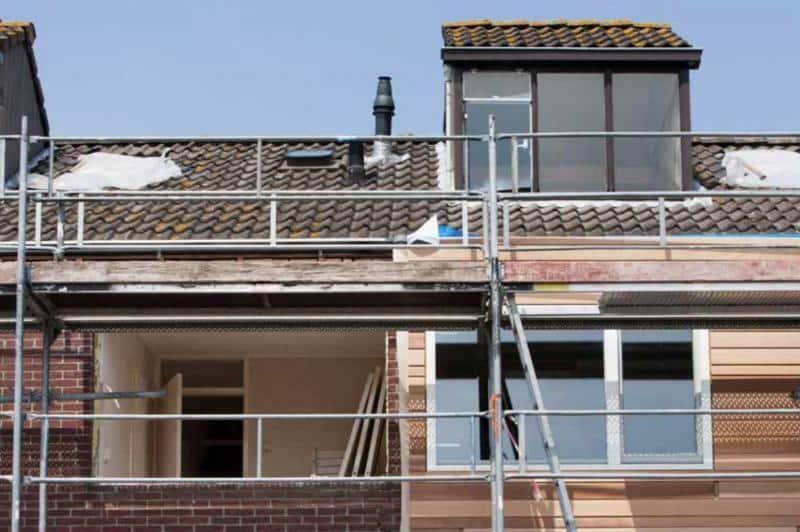Expert Talk: A new role for buildings in the energy system of the future
Buildings have a very important role to play in the energy transition. Today, buildings are responsible for approximately 40% of the energy consumption and 36% of the CO2-emissions in the European Union, primarily for heating and cooling. In this expert talk Stijn Verbeke (EnergyVille/ VITO) and Dirk Saelens (EnergyVIlle/KU Leuven) explain how this issue can be tackled and what role buildings have to play in the energy system of the future.
Written by Stijn Verbeke and Dirk Saelens. Stijn Verbeke is activity coordinator of the research group ‘Building and District Energy Performance’ within EnergyVille/VITO. Dirk Saelens is professor “Energy in Buildings” at the Department of Civil Engineering of KU Leuven. Both Stijn and Dirk are responsible for the academic aspects of the research group ‘Buildings and Districts’ at EnergyVille.
Our energy system is going through a transition towards a more competitive, sustainable and carbon-free future. EnergyVille supports this transition, focussing on innovative technology and applications. Buildings have a very important role to play in the energy transition. Today, buildings are responsible for approximately 40% of the energy consumption and 36% of the CO2-emissions in the European Union, primarily for heating and cooling. The energy demand will have to be reduced in order to reach net-zero energy buildings, or even positive energy buildings and districts.

To facilitate this shift, the energy demand of buildings will have to be drastically reduced. The techniques for doing so are well established: performant thermal insulation of the building envelope, controlled ventilation and above all, a well-thought-out design which makes optimal use of the sun during heating season, and mitigates the risk of overheating in summer. The Energy Performance of Buildings (EPB) regulations enforce this idea by setting up binding specifications for new buildings and thorough renovation projects. Over the last years, these specifications have been gradually tightened, resulting in a clear improvement of the energy performance of the new building stock in the three Belgian regions. In Flanders for example, the average E-level (measure of the energy performance) of newly-constructed buildings has decreased in 10 years with factor 3 [1]. The quality of the existing building stock, however, still underperforms. In comparison to surrounding countries, bigger and worse insulated buildings were built before 2006 (when the energy performance regulation was introduced), with an energy use per m2 of living space exceeding the European average with 52% [2]. In the medium term, the entire building stock should be tackled with more ambitious energy renovations, or alternatively demolition and reconstruction in other cases. The problem is well-known, but a major market uptake is currently lacking, despite promising statements in the Flemish Renovation Pact, the roll-out of energy performance certificates and all sorts of renovation remuneration schemes.

The biggest draw-back for a considerable increase of energy renovations is the limited interest of the average building owner. Not surprising since thorough energy renovations require considerable investments. A budget of 50.000€ or more is no exception to equip a conventional dwelling with a qualitative building envelope with sufficient insulation, performant glazing, and high-efficient installations for heating and sanitary hot water. Not everyone is willing or capable to fund such investment, especially since the market value of acquiring a poorly performing dwelling with low comfort levels is still relatively high in Belgium. In general, these investments have to compete with other renovation intentions such as an upgrade of the kitchen or bathroom. For rental buildings the situation is even more complicated, with the benefits going to the tenant while the costs are for the landlord. Horizons need to be broadened. The benefits of a renovation should not solely be addressed as simply the reduction of the energy bill: more living comfort and a healthier environment inside the building are ‘priceless’. Equally, the increased real estate value resulting from the retrofits can be accounted for. Policy initiatives can help improving the payback time of energy renovations, e.g. trough amending the current pricing levels of various energy carriers. . It is somewhat illogical that the owner of an energy efficient heat pump contributes to the climate goals by paying for green certificates while at the same time occupants using fossil fuel boilers don’t have to contribute. The integration of actual societal external costs (for example by means of a CO2 taxation) in energy costs can amend this and at the same time provide revenues that can help finance energy renovations and related social corrections.
Merely making buildings energy efficient will not be sufficient in a carbon-free future. In a forthcoming energy system based on carbon-free and renewable energy sources, the role of buildings will be altered. Energy positive communities not only require an efficient building envelope and technical installations, but also require energy to be generated locally to meet the remaining energy demand, to provide sanitary hot water, energy for lighting, appliances, electronics, etc. Such energy provision is in a full transition as well, moving toward decentralised renewable energy sources. District heating grids are an ideal solution for locations where sufficient, low cost heat sources are readily available (for example waste heat resulting from industrial processes or data centres, geothermal heat, …). At other locations, depending on the local context, other solutions are possible, such as combined heat and power (CHP) based on biomass for a street or a group of buildings; or individual heat pumps in combination with solar water heaters and photovoltaic (PV) panels placed on the buildings with the most favourably located roofs or façades. To synchronize the energy demand and the fluctuating generation profiles of such distributed energy sources, a coordinated approach is essential. In a future energy system, it will likely be more beneficial to no longer install all solar photovoltaic (PV) panels oriented to the south; an energy system primarily based on renewable energy sources would benefit from sufficient differentiation on orientations to better match the power demand and supply profiles. East or west oriented solar panels can enable a more evenly distributed generation profile, which can also be obtained through combining these with other renewable sources such as wind, hdyro or through the exchange of energy in between multiple buildings.
Last but not least storage will have an important role to play as well. To a limited extent this can entail electric storage in home batteries or even dynamic charging and discharging of an electric vehicle. Within a building, energy can also easily and directly be stored in thermal buffer vessels or in the structure of the building itself. In doing so, the heat demand can be flexibly postponed for a couple of hours or even days. The current energy performance regulations for buildings do not factor in the benefits of storage systems yet. Presently, energy storage is solely seen as the causeof energy loss, though it will become essential for a stable and carbon-free energy system. The simplistic scope of the current EPB regulation, in which the energy generated in summer by means of PV panels could virtually compensate the energy demand of heat pumps during winter, should equally be revised. Offer and demand will have to be aligned at much shorter intervals.
In all of this, it will be crucial to optimally control of the performance of the buildings and their technical systems. To operate in the energy system of the future, a building shall not only be energy efficient, but also smart. After all, it won’t be feasible for the occupant to explicitly follow up on whether energy needs to be stored, used or sold at any given moment according to the prevailing market prices;or decide whether additional solar heat gains would be useful at a given time in the light of expected weather conditions. A smart home makes use of a combination of digital sensors, controllers (of heat pumps, water taps, shades, motorised windows, …), smart algorithms and dashboards for control and monitoring. Working together, these enable an optimal management of a building, uniting comfort, energy efficiency and low operational costs. The cost of such smart applications is quickly declining. Smart thermostats are widely known and other applications which go further than merely dimming or changing the colour of the lights will follow soon. EnergyVille takes centre stage in the development of appropriate self-learning control algorithms for buildings. At European level our researchers take the lead in developing a Smart Readiness Indicator for buildings. This will enable to make a better decision on which technologies are reliable and offer an added value for the user. Are you yourself building or renovating a house? Apart from optimising the building envelope of your home, you should also look into technologies fit for the future, for example by choosing open data-protocols supported by different manufacturers and considering energy storage. Even if you don’t want to invest in sensors, motors, automation or batteries yet, you could proactively consider some additional space or provide data- and energy supply cabling. But above all, keep in mind that obtaining a smart and future-proof building will require a well-thought-out design of your new building or renovation with attention to superior energy performances and comfort for all inhabitants. Renewable energy generation, storage and smart control will then be the icing on the cake.
KEY TAKEAWAYS
- New building are becoming more energy efficient, though the existing building stock desperately lags behind.
- Current initiatives to make the existing building stock more energy efficient and comfortable are needed but don’t have the expected results.
- Various technologies exist for renewable energy, heat generation, storage, … The optimal mix depends on the local context of a building.
- A building in the future will not merely be energy efficient, but will also use smart technologies to control and exchange energy.
REFERENCES
[1] Flemish Energy Agency – ‘Cijfers en statistiek voor EPB-aangiften ingediend tot en met 31/12/2017 (2018)’
[2] EU Building Stock Observatory – data 2013

